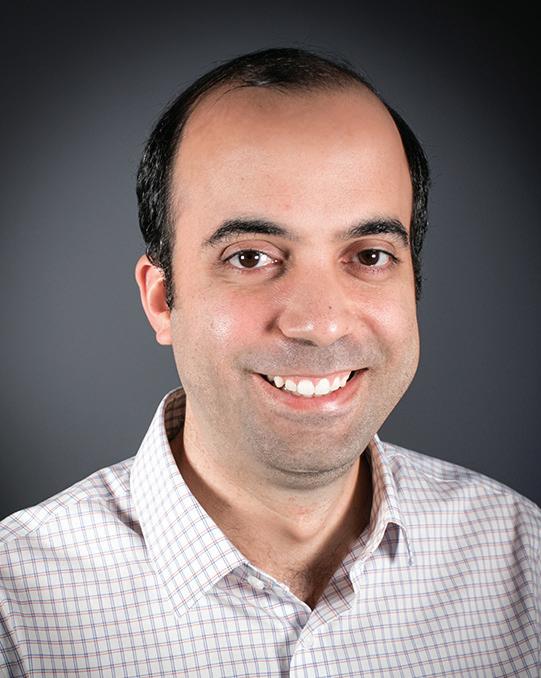
3 minute read
SHOOTING FOR THE MOON
Mario Bergés
MAKING SMART CITIES ETHICAL AND SUSTAINABLE
Advertisement
From self-driving cars to smart buildings, new questions are arising as intelligent and autonomous systems become more and more a part of our daily lives. Who owns and benefits from all the data collected? Who do these solutions help and who might they leave out? How will they impact an environment already pushed to the brink by our current way of life?

Greg Lowry
“We used to build machines that did exactly what we told them,” says CEE Professor Mario Bergés. “Now we’re teaching machines to make decisions on our behalf and implement those decisions on the fly. It’s more vital than ever that our designs consider these ethical dimensions.”
Bergés is the principal investigator on the Autonomous Technologies for Livability and Sustainability initiative, which won funding from the CMU College of Engineering’s Moonshot 2020 competition. United by a bold vision, the initiative brings together people from across Engineering as well as Architecture, Computer Science, Philosophy, and Heinz College.
The group will also partner with industry and local government as they develop and test theories, methodologies, and technologies to solve wide-ranging ethical and sustainability concerns around autonomous systems.
CEE Professor Greg Lowry is one of the seven CEE researchers involved. “A lot of people are working on smart cities. Very few people are thinking about how to implement those systems in a sustainable way that maintains people’s privacy and that is equitable across the board,” he says. “If you don’t prioritize and design those features into the system from the start, you’re going to discover that what you created encourages or enhances inequities.”
A Layered Approach: Sensing, Planning, and Acting
Autonomous systems generally have three layers, and CMU researchers will start their project by addressing concerns in each one individually. The first layer is sensing, which involves collecting information about the outside environment. Next is planning, when the system learns from and analyzes data to make decisions. Finally, actuation, or control, occurs when a plan is put in action and the system exerts influence over its environment.
“Things can go wrong in each of these three layers,” explains Bergés. “For example, if we’re tracking people or goods in a city, how do we do sensing without invading people’s privacy? What technologies will allow you to track goods without revealing who is carrying the goods or where exactly they’re going?”
Take the sensing goal of counting pedestrians. Cameras record much more information than needed for counting people. While cameras could process information locally and share only the relevant details, the original camera feed could still be hacked and people’s privacy violated.
To address these concerns, the CMU group plans to design sensors that optically suppress features relating to identity while preserving other relevant aspects of the image.
For the planning layer, the team will build city transportation models with increased dimensions that include things like accessibility constraints, which historically have not always been incorporated. They’ll also explore using crowd-sourced city models to increase the efficiency of transportation systems.
Another goal is to design decentralized infrastructure computing so that no single authority has control over—or information about—an entire city’s buildings. “If each house can take actions that bring the overall city’s power use down, without having to know everyone’s power consumption and what they’re doing, that’d be great,” says Bergés. “But how do we do that? Those are the types of questions we’re going to be solving.”
Planning For the Road Ahead
Once solutions are validated for the sensing, planning, and control layers, the group will combine and test the solutions together in more complete applications. With the Moonshot funding, they’ll focus first on transportation systems and smart buildings. They’re also working to start a research center that could allow them to expand their partnerships and extend their work, including exploring areas like intelligent food and water systems.
“Carnegie Mellon is the ideal place for such a center,” says Lowry. “We have expertise in AI, autonomous systems, transportation, buildings, humancomputer interaction, engineering and public policy, ethics, machine learning, robotics. These are elements that CMU is exceptional at, and our faculty has been working in this interdisciplinary manner for decades.”
With new technologies on the horizon, Lowry, Bergés, and the entire team are committed to making sure the changes ahead are for the best.
“Making buildings more efficient, making your vehicles drive autonomously, and so on—that’s already going to happen,” Bergés asserts. “What we want is for it to happen without negative consequences for our cities and citizens.”






